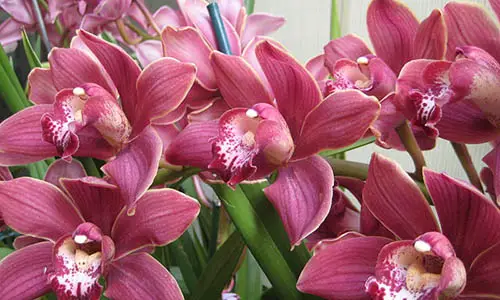Orchids come from the most numerous family of flowering plants. There are 25,000 species of ‘orchidaceae’ found all over the world, except Antarctica. In spite of their vast range and number, orchids are considered a rarity, symbol of refinement and good taste. The 1939 best- selling novel by James Hadley Chase ‘No Orchids for Miss Blandish’ tells of the hardships undergone by a kidnapped heiress.
FACT 1: Orchids are mostly found it the tropical and sub-tropical regions of the world. However species of orchid are found in the temperate zones and at least four species have been identified in regions above the Arctic Circle. Orchids are found in altitudes ranging from sea level to 1500 meters.
FACT 2: Orchids thrive in various habitats. It is commonly believed that orchids abound in tropical rain forests. However in the rain forests of Peru only 125 species of orchid are found. Orchids thrive best in the mountainous regions of the tropics where the clouds are constantly brushing against the mountains. They are also found in deserts and some have even been found growing on bare rock.
FACT 3: Orchids could be either terrestrial or epiphytic. Epiphytic orchids are not rooted in the soil; they grow on other plants. Their roots absorb moisture from the air. Most species of orchid manufacture their own nourishment, but some species are saprophytic. They live on dead organic material or get their nutrition from a fungus living in their roots.
FACT 3: In some cultures orchids are considered a symbol of virility. The word orchid is derived from the Greek word orchis, meaning testicle. The plant is so named because of the shape of the root tubers of some species. They have also been considered an aphrodisiac.
FACT 4: The Chinese philosopher Confucius likened a virtuous man to an orchid. Artists in China often inserted orchids into their paintings to evoke the qualities of a perfectly cultured gentleman. In China as in many other parts of the world, orchids have long been valued for the beauty of their unique flowers, their fragrance, their foliage and the medicinal value of the plant. The oldest Chinese medical texts mention the orchid and the orchid is an essential ingredient in many modern Chinese medicines.
FACT 5: The family orchidaceae has many unique features. These monocotyledonous plants often have the male and female organs in a single column. The seed does not contain endosperm. The nutrition for the seed for the period from germination to self-sufficiency comes from a fungus that penetrates the seed.
FACT 6: Of all the 25,000 species of orchids, the only edible product is vanilla from the species vanilla planifolia. This species grows in tropical America. It flowers for only a few hours on only one day of the year. This orchid has only one natural pollinator the ‘Melipona’ bee. The Aztecs cultivated this plant and mixed vanilla in their drink xocolati, now known as chocolate. Vanilla is still used as an exquisite flavour, in chocolate and many other foods.
FACT 7: In the Victorian Age in Great Britain, the nobility considered orchids a treasure and collected and displayed them.
FACT 8: There is a great commercial demand for orchids. They are extremely popular as garden and potted plants and are used widely in bouquets and as decorations. Some rare orchids have been so sought after that they have been listed as endangered. All species of orchid native to the United States are mentioned in CITES (Convention on International Trade in Endangered Species of wild flora and fauna)
FACT 9: The vast variety of orchid shape and colour is related to the pollination process. Flowers pollinated by bees are brightly coloured. Those pollinated by moths are white and have a strong fragrance as moths fly by night. Birds have no sense of smell; an orchid adapted to bird pollination does not have any fragrance. These orchids are bright red, yellow or blue and are tubular shaped.
FACT 10: The relationship between flower structure and pollinator was observed by English naturalist Charles Darwin. An orchid on the island of Madagascar had a very long nectary. Darwin accurately predicted that the pollinator of this orchid would be a moth with a 25 cm long proboscis. The moth has since been found and has been observed pollination the orchid.









Leave a Reply